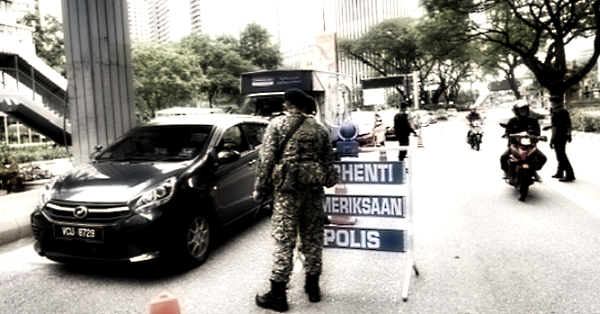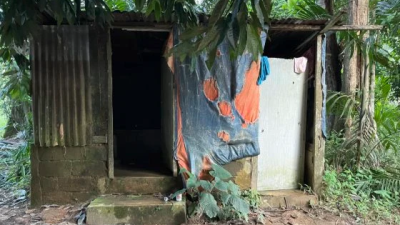By Ezzaty Hasbullah
On the 21st of May, the Prime Minister's Office published a statement that outlined their strategy for battling the latest wave of COVID-19 plaguing Malaysia.
Their game-plan: a strengthening of PKP 3.0 that will see 'stricter social and economic restrictions'.
But what does that even mean? What restrictions does it entail? Which states are affected and by what metric?
This announcement follows the barrage of similarly confusing and frustratingly vague proclamations churned out by the government.
Within the past year, we have had an array of acronyms the likes of PKP 1.0, PKP 2.0, PKP 3.0, PKPB, PKPD, PKPP, all of which with their own shifting SOPs and unclear thresholds for implementation.
A quick look over the Majlis Keselamatan Negara's website shows over 70 SOP files for PKP, 64 for PKPB, 77 for PKPP and a whopping 273 SOP files for PKPD. These 484 files do not even include those that were instituted prior to December 2020.
Given the mess of it all, the numerous U-turn debacles that we have seen play out in the past months come as no surprise. We saw not one, but two such events at the start of May alone.
Over a weekend, we saw restrictions of locales listed in the Hotspot Identification Dynamic Engagement (HIDE) system's evolve from not needing to close (10.30 am, May 8), to needing to close immediately (7.00 pm, May 8), only needing to close on the following Monday (11.35 pm, May 8), and back to closing immediately (12.10 am, May 9). All this, only for the HIDE system list to fall completely off the radar on Sunday, May 9.
Restrictions on exercise saw similar flip flops. What started as a limited ban on contact sports on May 5 turned into a blanket ban following an announcement by Deputy Youth and Sports Minister Wan Ahmad Fayshal Wan Ahmad Kamal on May 6, which was quickly overturned on May 7.

If members of the government themselves are confused, what chance does the rakyat have to make heads or tails of what is happening?
The back and forth only engenders confusion that, at best, culminates to a sense of frustration and, at worst, leads to public unrest.
As Malaysia continues to hit new record numbers of daily COVID-19 cases, we are in desperate need of clarity to bring the whole of Malaysia together as a unified front against COVID-19.
How do we make this happen? Create one – a single one – master Alert Levels guide.
The system would specify four alert levels that are defined by the severity of COVID-19. This can be ascertained through epidemiological indicators such as:
1. Rate of new COVD-19 cases detected in all age groups
2. Rate of new COVD-19 cases detected in the over-60 age group
3. Rate of case increase and decrease
4. Positivity rate (the number of positive cases detected as a percentage of tests taken), and
5. Pressure on the public healthcare system (i.e ICU occupancy rates).
Based on the aforementioned data points, each Alert Level would also specify the social and public health measure to be implemented. This could range from a six-person restriction on social gatherings in level 1 to a full lockdown in level 4.
Some key social and economic activities that need to be considered include: social gatherings, travel and transport, retail stores, hospitality venues (i.e. restaurants), personal care businesses (i.e. hairdressers), sporting activities, places of worship, weddings, funerals, care home visits, public services and buildings and festivities.
It should also be clear that the control measures of each level are cumulative in nature; such that all the restrictions outlined in Levels 1, 2 and 3 are applicable once Level 4 is proclaimed.
This same guide can be applied at both a national and state level. The latter would see each state being independently risk assessed and assigned an Alert Level.
This is not to say that the master guide is a static document. Measures and risk assessments can and should be updated to reflect emerging evidence on COVID-19, evaluations on the effectiveness of control measures both locally and internationally, and the overall state of the pandemic at the national and global level.
The existence of the master guide simply places all these strategies in a framework that is easily disseminated and understood.
This system is not a novel proposition. The New Zealand Government introduced its 4-tiered Alert Level system as early as March 2020. It has since played an important role in communicating and coordinating public action against managing the spread of the virus.
Concise government action, consolidated public action and strict implementation have allowed New Zealand to be one of the earliest countries to control its domestic spread of COVID-19. With less than 10 new daily cases, New Zealand has now lifted all its restrictions as of March 21st 2021.
Malaysia is now constantly seeing upwards of 6,000 new daily cases. The media is littered with stories of mounting deaths, filled ICU beds and health supply shortages.
Although this creates immense pressure, the urgency to act needs to be balanced with sound evidence-based judgment. Failure to do so will only lead to further chaos and the inevitable worsening of the situation.
More acronyms and categories of SOPs is not merely frustrating, it is unjust.
As the pandemic resurges and the rakyat lack proper guidance from the government, more people will be infected, the death toll will continue to rise, many will fall into unemployment, and the country's socioeconomic recovery will be curtailed further.
Malaysia has now reached a grim milestone as our levels of COVID-19 cases (per million) surpasses India.
Before our public healthcare system buckles under pressure, the government needs to make a well-informed, cohesive and unified guideline.
The battle is on and we cannot afford to continue to play things by ear.
(Ezzaty Hasbullah is a recipient of the prestigious international Rhodes Scholarship, currently reading for the MSc in International Health and Tropical Medicine at the University of Oxford. Prior to that, she graduated Summa Cum laude from the University in Pennsylvania in Global Health.)
ADVERTISEMENT
ADVERTISEMENT


































